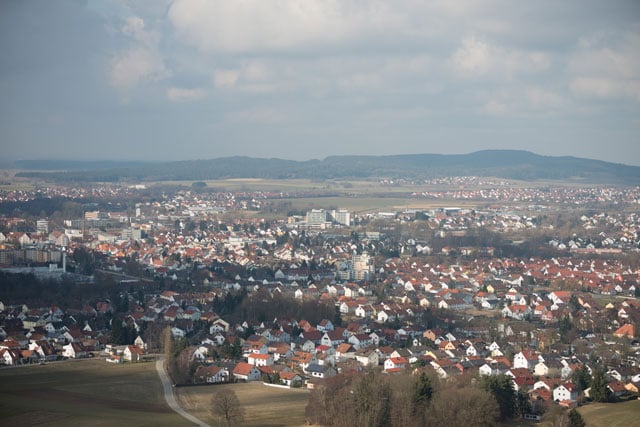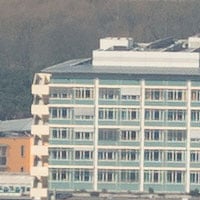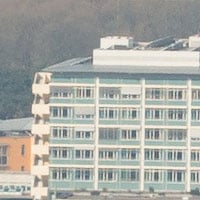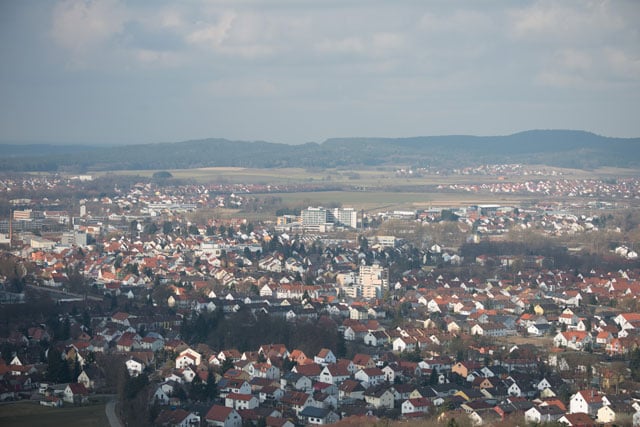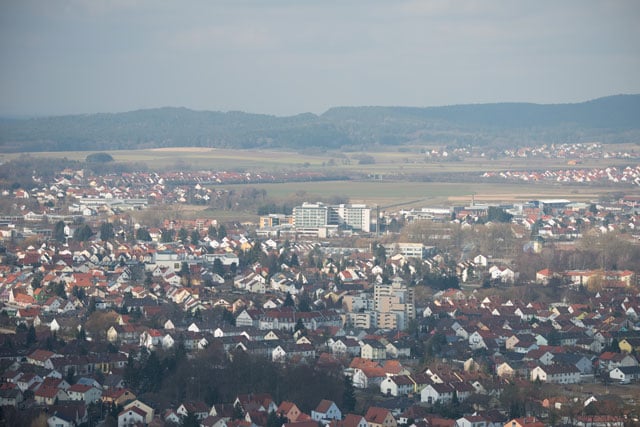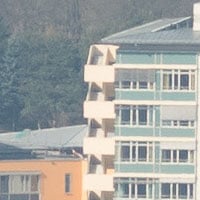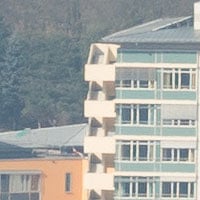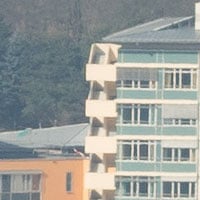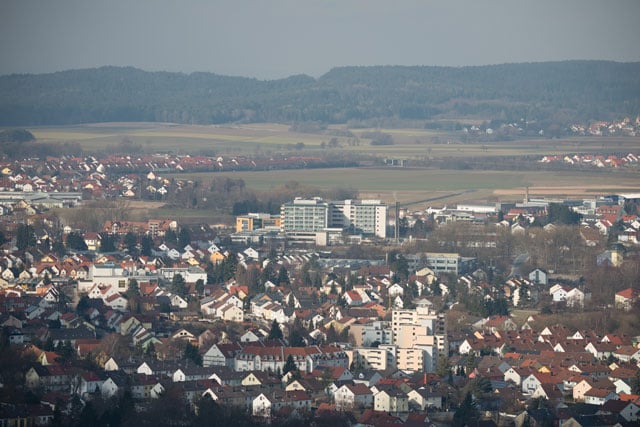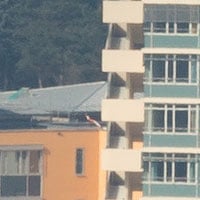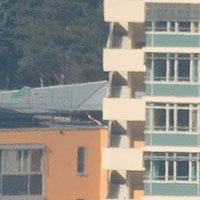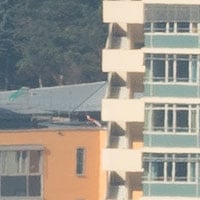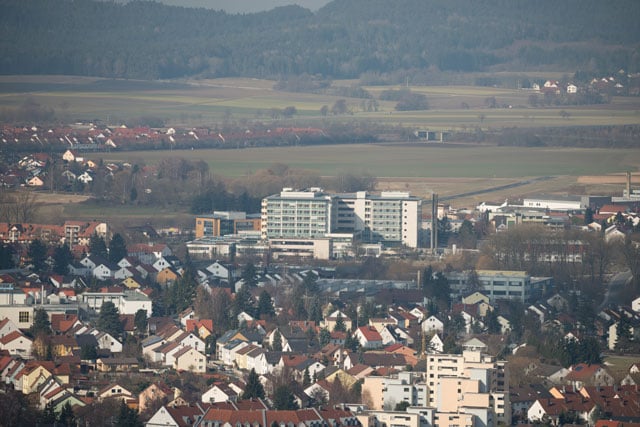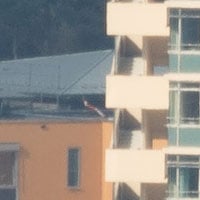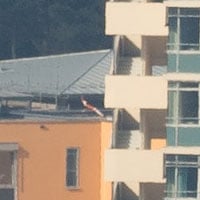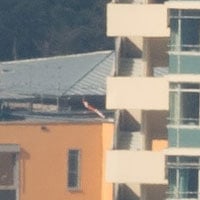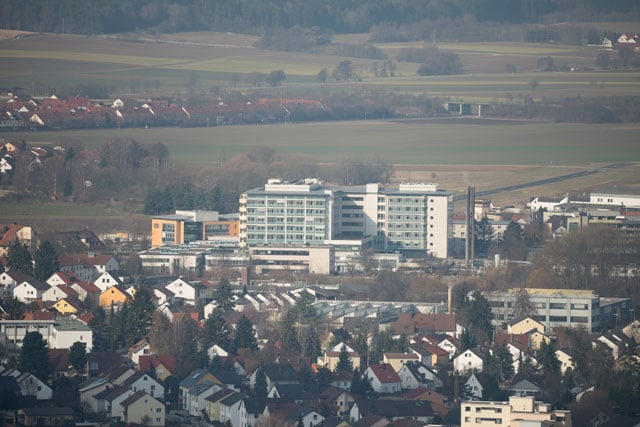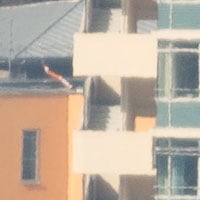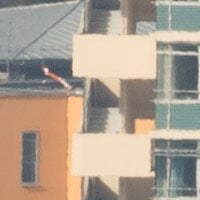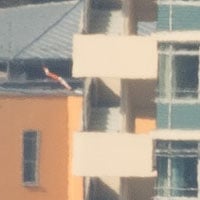Nikon 80-400mm f4.5-5.6G VR review
-
-
Written by Thomas
Quality
Longitudinal Chromatic Aberration
Normally I don’t test for longitudinal CA (loCA, a.k.a. “axial color” or “bokeh CA”) on lenses slower than f4.0. But I had seen incidents of loCA coming up when shooting so I repeated my standard test to put the loCA performance of this lens into perspective. Shot at 200mm f5.3 the lens shows some slight magenta coloration on the left (foreground) and very mild greenish hues on the right (background).
Nikon AF-S 80-400mm f/4.5-5.6G VR Longitudinal Chromatic Aberration (loCA) |
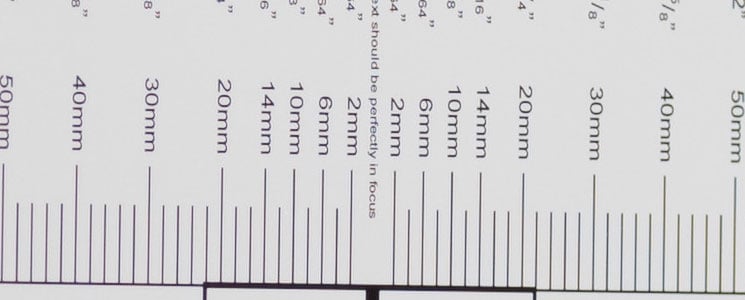 |
| 100% crop, 200mm, f2.8, left=closer, right=farther away |
This is on the low end of lenses I’ve tested so far but you can provoke the effect at shorter focal lengths and shorter distances like you can see in the following 50% crop of a shot taken at 105mm f4.8 and 2.5m.
| Longitudinal CA: shot at Aperture Priority +2EV, 1/500, f4.8, 100 ISO, 80-400mm at 105mm |
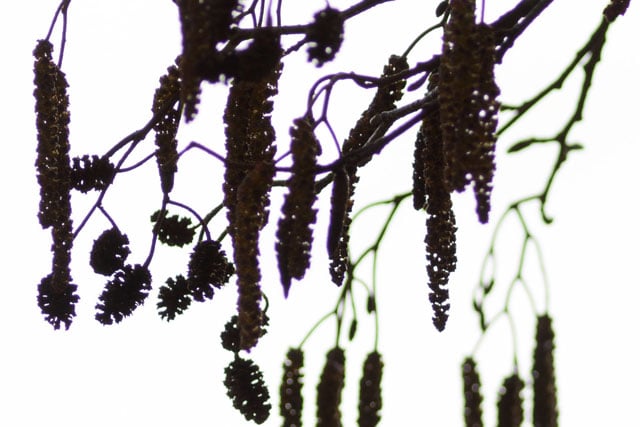 |
| Click image to access large original at Flickr |
Sharpness and contrast
Let’s have a look at the theoretical performance of the new lens (first pair of MTF-charts) at the wide and the long end first and compare it to the performance of its predecessor (second pair of MTF-charts):
New Nikon AF-S 80-400mm f/4.5-5.6G VR MTF | ||
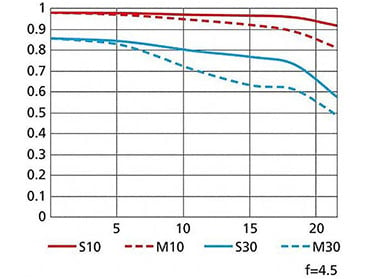 | 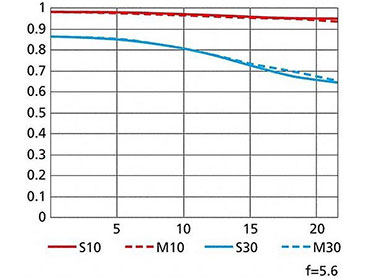 | |
| at 80mm, f4.5 | at 400mm, f5.6 | |
The predecessor: Nikon AF 80-400mm f/4.5-5.6D VR MTF | ||
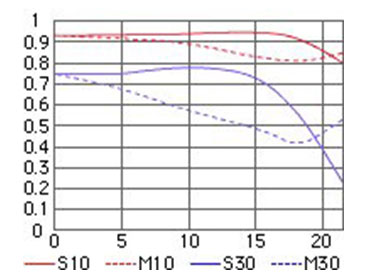 | 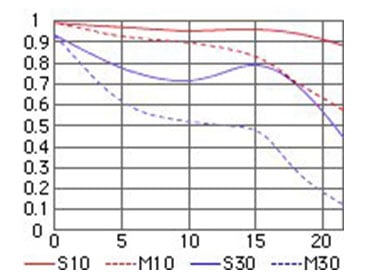 | |
| at 80mm, f4.5 | at 400mm, f5.6 | |
These charts show the lens-performance at the largest aperture. Higher values are better and the closer the dotted and the continuous lines of each color are together the less astigmatism (= resolution depends on the orientation of the test-pattern) the lens has. The x-axis displays the distance from the optical axis (=center of the sensor) in mm. I’ll show you the real-life performance at 4 mm (center), 13 mm (DX-corner), and 20 mm (FX-corner) on a D800.
From the charts the new lens should perform on a very high level regarding overall contrast (red lines) across the FX sensor. Sharpness (blue lines) declines very slightly towards the corners of the FX sensor with only a little astigmatism on the short end. Compared to the MTF-charts of its predecessor (shown below) the new zoom shows vastly improved characteristics: better contrast, higher resolution, less astigmatism, and less variation across the frame. On paper the lens looks like a clear winner for a 5x zoom.
But let’s see how this theoretical performance translates into real life results in the sharpness test based on Siemens-stars.
What follows are near-center results (first column) followed by DX-corner results and FX-corner results on a D800. The D800 results from the DX-corner should be a very good approximation for performance on a 16MP DX sensor (like the D7000), because the pixel-pitch of both sensors are the same. But differences in the AA-filter and micro-lens-design of a D800 and a D7000 might yield different end-results.
Processing was done in Lightroom 4.3 from RAW at camera standard settings. Noise-reduction is set to 0, sharpening to 70/0.5/36/10, with no extra tone, color, or saturation-adjustment. White-balance was adjusted to a neutral white and I did some exposure compensation to make the brightness match. CA-removal is ON.
The following are all 100% crops!
Let’s have a look at the performance at 80mm first:
Nikon AF-S 80-400mm f/4.5-5.6G VR with Nikon D800 100% crop from center | Nikon AF-S 80-400mm f/4.5-5.6G VR with Nikon D800 100% crop from DX-corner | Nikon AF-S 80-400mm f/4.5-5.6G VR with Nikon D800 100% crop from FX-corner | ||
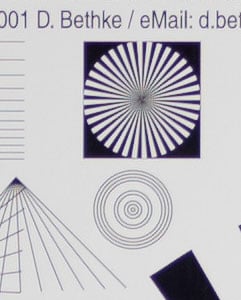 | 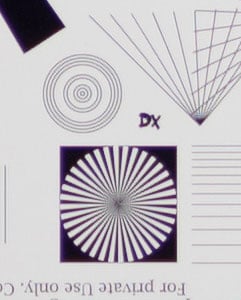 | 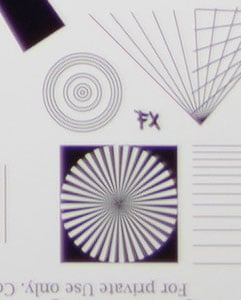 | ||
80mm, f4.5, 100 ISO | 80mm, f4.5, 100 ISO | 80mm, f4.5, 100 ISO | ||
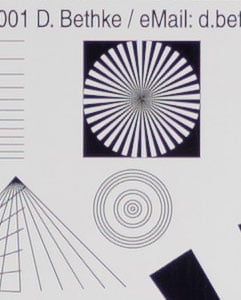 | 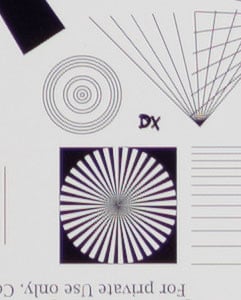 | 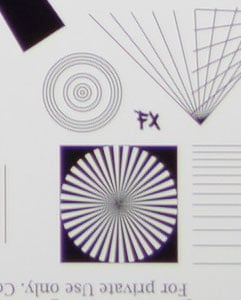 | ||
80mm, f5.6, 100 ISO | 80mm, f5.6, 100 ISO | 80mm, f5.6, 100 ISO | ||
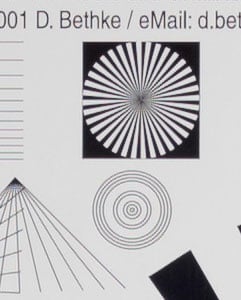 | 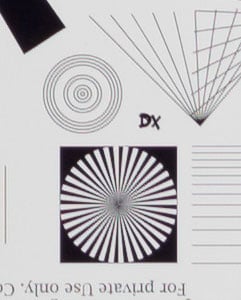 | 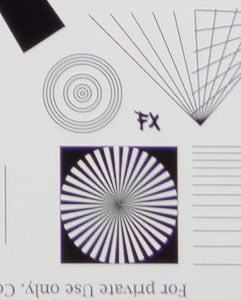 | ||
80mm, f8.0, 100 ISO | 80mm, f8.0, 100 ISO | 80mm, f8.0, 100 ISO | ||
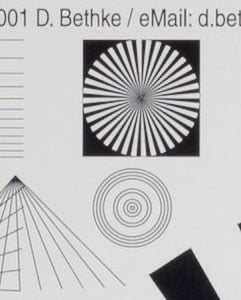 | 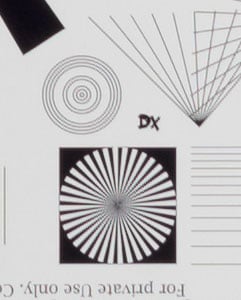 | 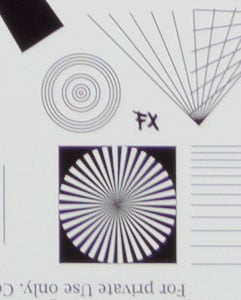 | ||
80mm, f11, 100 ISO | 80mm, f11, 100 ISO | 80mm, f11, 100 ISO |
These 100% crops directly from a 36MP D800 sensor show that this lens is very sharp right from the start. only the FX-corner shows a little residual spherical aberration at f4.5. Stopping down to f5.6 brings the performance of the center and DX-corner to excellent levels and the FX-corner is also very good now. Diffraction is setting in very slightly at f11. Distortions are minimal.
Performance at 105mm:
Nikon AF-S 80-400mm f/4.5-5.6G VR with Nikon D800 100% crop from center | Nikon AF-S 80-400mm f/4.5-5.6G VR with Nikon D800 100% crop from DX-corner | Nikon AF-S 80-400mm f/4.5-5.6G VR with Nikon D800 100% crop from FX-corner | ||
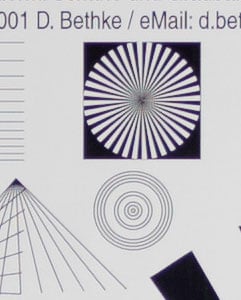 | 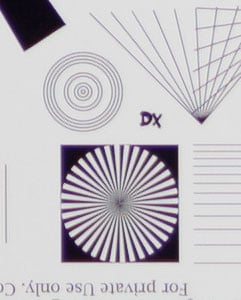 | 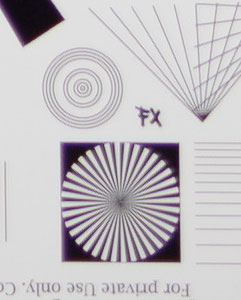 | ||
105mm, f4.8, 100 ISO | 105mm, f4.8, 100 ISO | 105mm, f4.8, 100 ISO | ||
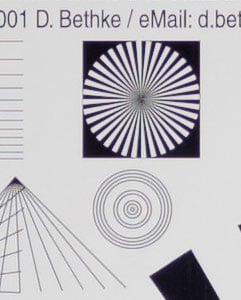 | 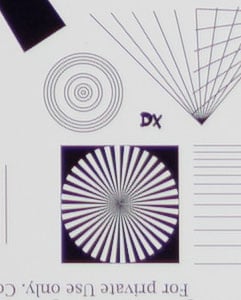 | 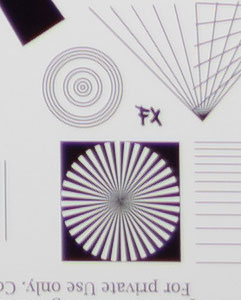 | ||
105mm, f5.6, 100 ISO | 105mm, f5.6, 100 ISO | 105mm, f5.6, 100 ISO | ||
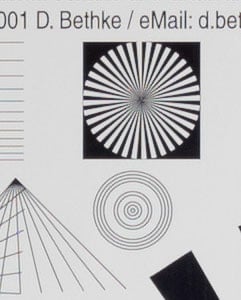 | 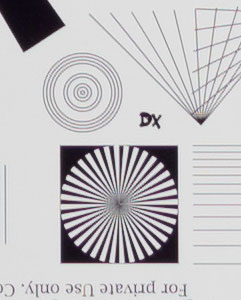 | 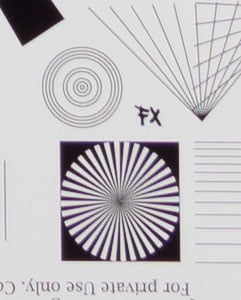 | ||
105mm, f8.0, 100 ISO | 105mm, f8.0, 100 ISO | 105mm, f8.0, 100 ISO | ||
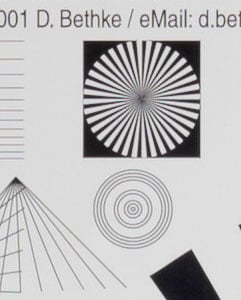 | 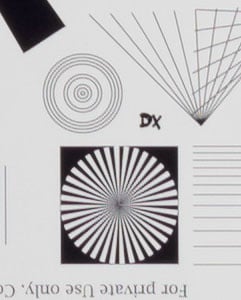 | 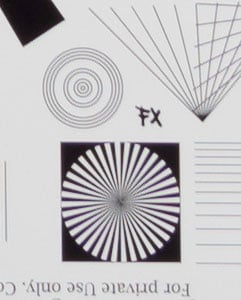 | ||
105mm, f11, 100 ISO | 105mm, f11, 100 ISO | 105mm, f11, 100 ISO |
At 105mm the lens shows the same excellent performance as at 70mm.
Let’s move on to 150mm:
Nikon AF-S 80-400mm f/4.5-5.6G VR with Nikon D800 100% crop from center | Nikon AF-S 80-400mm f/4.5-5.6G VR with Nikon D800 100% crop from DX-corner | Nikon AF-S 80-400mm f/4.5-5.6G VR with Nikon D800 100% crop from FX-corner | ||
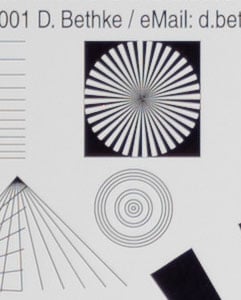 | 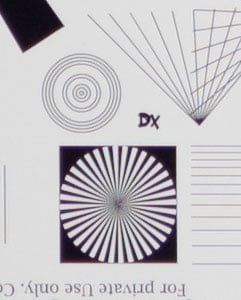 | 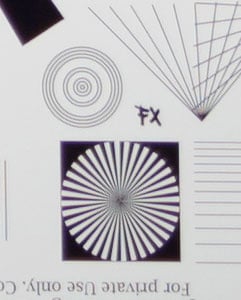 | ||
150mm, f5.0, 100 ISO | 150mm, f5.0, 100 ISO | 150mm, f5.0, 100 ISO | ||
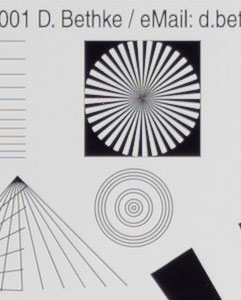 | 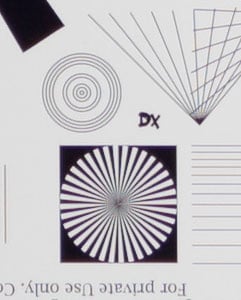 | 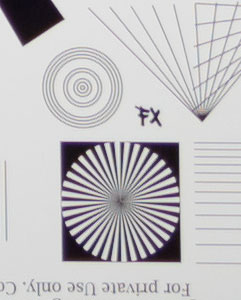 | ||
150mm, f5.6, 100 ISO | 150mm, f5.6, 100 ISO | 150mm, f5.6, 100 ISO | ||
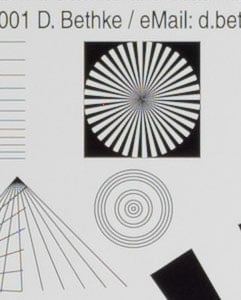 | 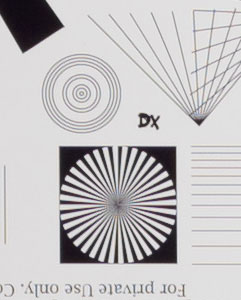 | 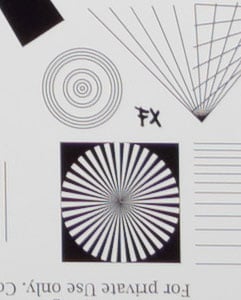 | ||
150mm, f8.0, 100 ISO | 150mm, f8.0, 100 ISO | 150mm, f8.0, 100 ISO | ||
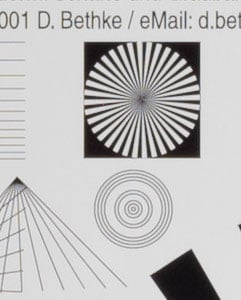 | 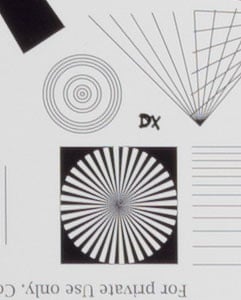 | 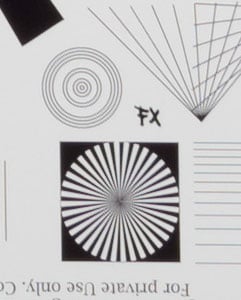 | ||
150mm, f11, 100 ISO | 150mm, f11, 100 ISO | 150mm, f11, 100 ISO |
At 150mm the FX-corner shows almost no haloing wide open.
Performance at 200mm:
Nikon AF-S 80-400mm f/4.5-5.6G VR with Nikon D800 100% crop from center | Nikon AF-S 80-400mm f/4.5-5.6G VR with Nikon D800 100% crop from DX-corner | Nikon AF-S 80-400mm f/4.5-5.6G VR with Nikon D800 100% crop from FX-corner | ||
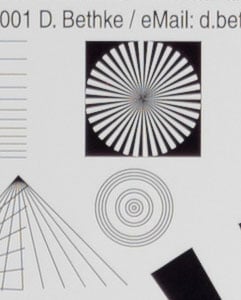 | 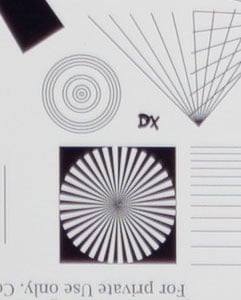 | 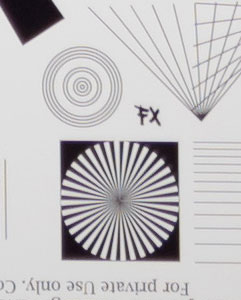 | ||
200mm, f5.3, 100 ISO | 200mm, f5.3, 100 ISO | 200mm, f5.3, 100 ISO | ||
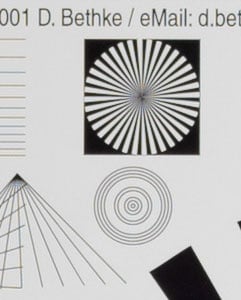 | 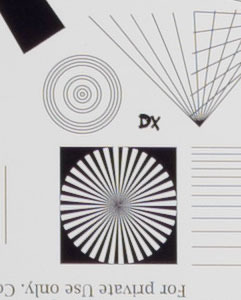 | 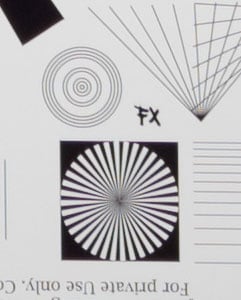 | ||
200mm, f8.0, 100 ISO | 200mm, f8.0, 100 ISO | 200mm, f8.0, 100 ISO | ||
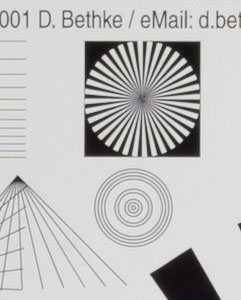 | 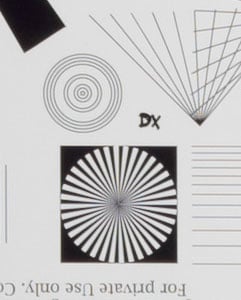 | 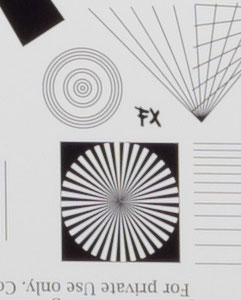 | ||
200mm, f11, 100 ISO | 200mm, f11, 100 ISO | 200mm, f11, 100 ISO |
At 200mm f5.3 a little haloing is reducing the edge-contrast in the DX-crop. But nothing to worry about. Stopping down to f8 restores perfect acuity.
Performance at 300mm:
Nikon AF-S 80-400mm f/4.5-5.6G VR with Nikon D800 100% crop from center | Nikon AF-S 80-400mm f/4.5-5.6G VR with Nikon D800 100% crop from DX-corner | Nikon AF-S 80-400mm f/4.5-5.6G VR with Nikon D800 100% crop from FX-corner | ||
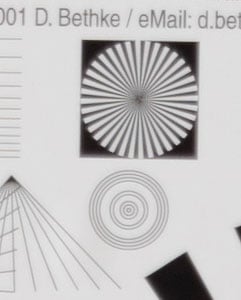 | 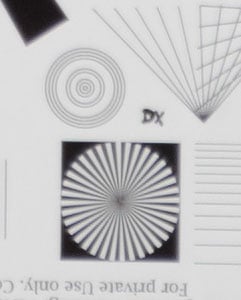 | 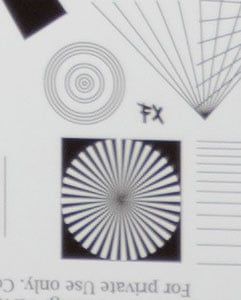 | ||
300mm, f5.6, 100 ISO | 300mm, f5.6, 100 ISO | 300mm, f5.6, 100 ISO | ||
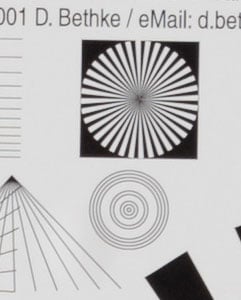 | 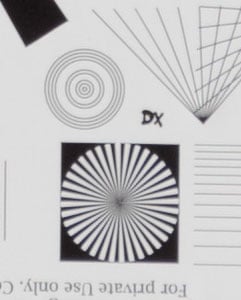 | 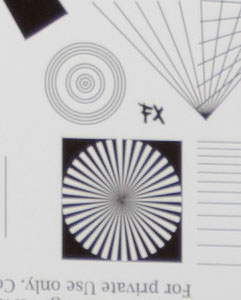 | ||
300mm, f8.0, 100 ISO | 300mm, f8.0, 100 ISO | 300mm, f8.0, 100 ISO | ||
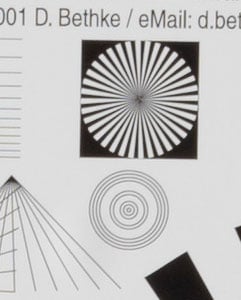 | 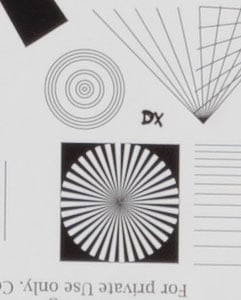 | 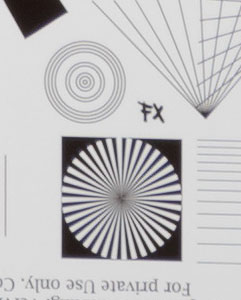 | ||
300mm, f11, 100 ISO | 300mm, f11, 100 ISO | 300mm, f11, 100 ISO |
300mm seems to be the weak spot of this lens. Although resolution is still on a very high level, overall contrast is reduced by light bleeding into dark areas (haloing). But this effect is reduced greatly by stopping down to f8. The lens has also developed a visible pin-cushion distortion.
Performance at 400mm:
Nikon AF-S 80-400mm f/4.5-5.6G VR with Nikon D800 100% crop from center | Nikon AF-S 80-400mm f/4.5-5.6G VR with Nikon D800 100% crop from DX-corner | Nikon AF-S 80-400mm f/4.5-5.6G VR with Nikon D800 100% crop from FX-corner | ||
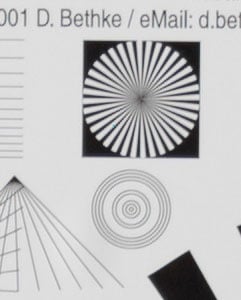 | 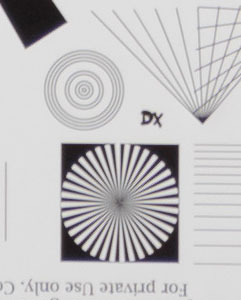 | 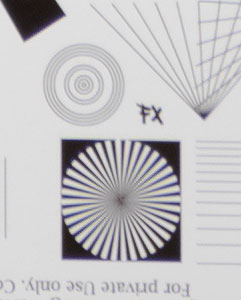 | ||
400mm, f5.6, 100 ISO | 400mm, f5.6, 100 ISO | 400mm, f5.6, 100 ISO | ||
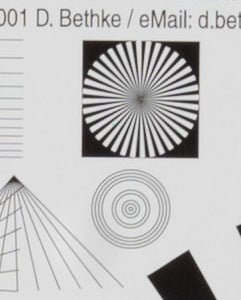 | 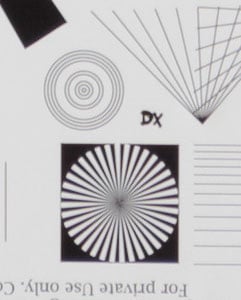 | 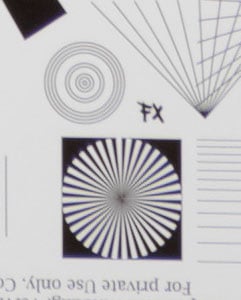 | ||
400mm, f8.0, 100 ISO | 400mm, f8.0, 100 ISO | 400mm, f8.0, 100 ISO | ||
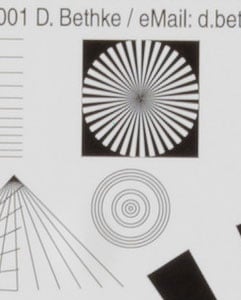 | 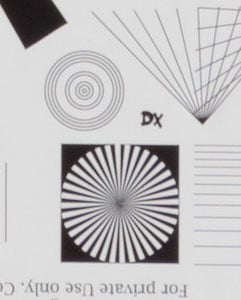 | 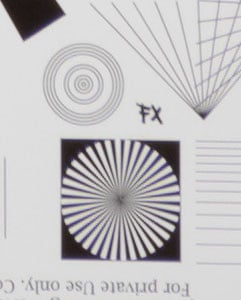 | ||
400mm, f11, 100 ISO | 400mm, f11, 100 ISO | 400mm, f11, 100 ISO |
Fortunately performance at 400mm is restored almost to levels at the shorter end. Haloing wide open is greatly reduced, only the resolution in the FX-corner is the weakest of all focal lengths albeit still at good levels.
Performance at large distances
The Siemens-star test-targets are shot at a distance of 40x focal length (i.e. at 4m for 100mm f.l.). But performance of lenses also depends on the shooting distance. Therefore I present another series of test-shots of a landscape dubbed the “Unremarkables” where you can measure distances in km, not meters. Processing was done in Lightroom 4.3 from RAW at Adobe Standard settings. Noise-reduction is set to 0, sharpening to 70/0.5/36/10, with no extra tone, or saturation-adjustment. Only white-balance was adjusted to compensate for the very blue light. There’s no tinkering with vignette-control so you see it here as it is produced by the lens. Focus was acquired at the largest aperture manually and not changed for other apertures.
You can click on each image to access the large original. Please respect our copyright and only use those images for personal use.
The main image shows the complete scene at maximum aperture to give you an impression of the angle of view and to judge vignetting. This is followed by one row of 100% crops at different apertures each from the middle and the right (FX-)border. Let’s start with 80mm focal length:
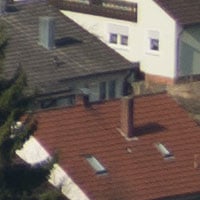 | 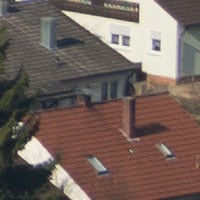 | 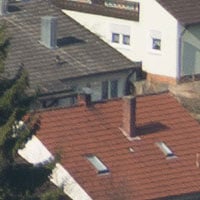 | ||
80mm, f4.5, 100 ISO, border | 80mm, f5.6, 100 ISO, border | 80mm, f8, 100 ISO, border | ||
The performance at 80mm wide open is very good even at the border. Stopping down to f5.6 gives performance another slight boost. Vignetting wide open is relatively low.
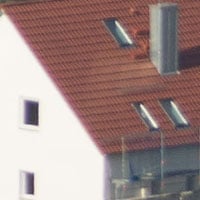 | 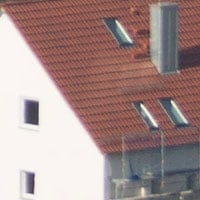 | 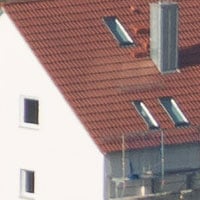 | ||
105mm, f4.8, 100 ISO, border | 105mm, f5.6, 100 ISO, border | 105mm, f8, 100 ISO, border | ||
Again very good performance across the frame wide open which can be increased to excellent levels by stopping down to f8.
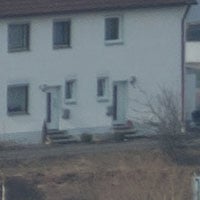 | 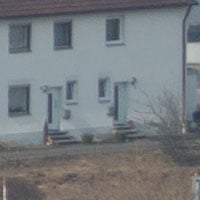 | 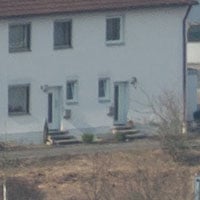 | ||
150mm, f5.0, 100 ISO, border | 150mm, f5.6, 100 ISO, border | 150mm, f8, 100 ISO, border | ||
Same story at 150mm.
 |  | 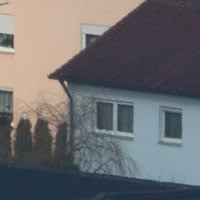 | ||
200mm, f5.3, 100 ISO, border | 200mm, f8, 100 ISO, border | 200mm, f11, 100 ISO, border | ||
200mm looks like a winner too, sharp and contrasty from the beginning.
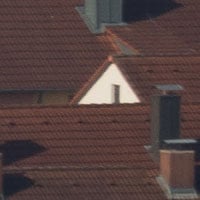 |  |  | ||
300mm, f5.6, 100 ISO, border | 300mm, f8, 100 ISO, border | 300mm, f11, 100 ISO, border | ||
Here you can clearly see the effect of haloing reducing the center contrast, while the border/corner does not suffer in a similar way. Stop down to f8 at this focal length and you’re good to go.
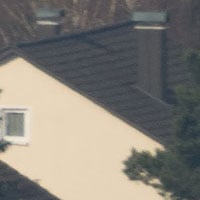 | 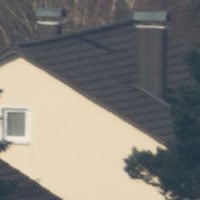 | 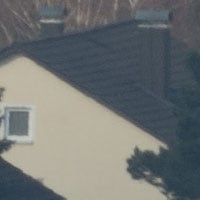 | ||
400mm, f5.6, 100 ISO, border | 400mm, f8, 100 ISO, border | 400mm, f11, 100 ISO, border | ||
At 400mm focal length and 2km distance turbulences from heated air are marring the image quality in the center crops. So it’s hard to judge these images correctly. But it seems that stopping down to f8 improves contrast and acuity somewhat.
All-in-all the lens is a very impressive performer near and far with a slight dip in contrast around 300mm focal length and a weaker FX-corner at 400mm. Field curvature does not seem to be an issue so the lens is good to capture flat and distance scenes.
Now let’s check out some Nikon 80-400mm f4.5-5.6G VR sample images, or if you’ve seen enough, head over to my verdict.
